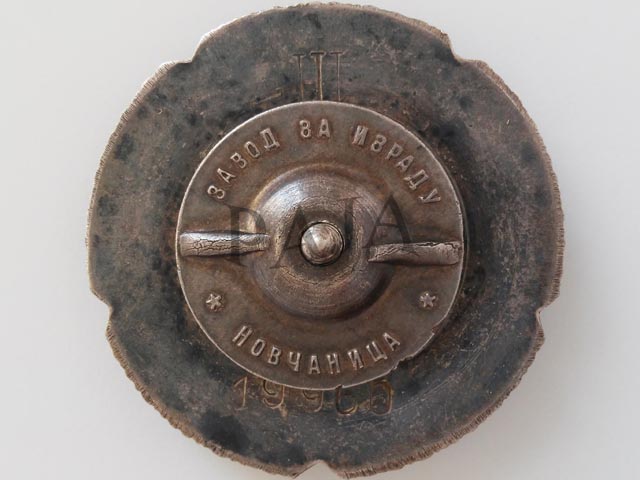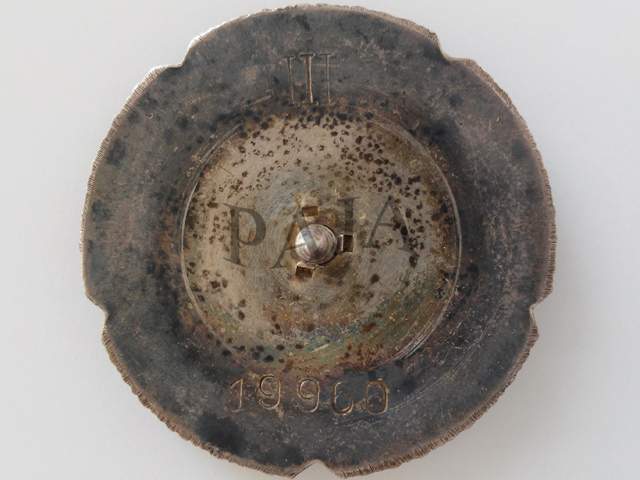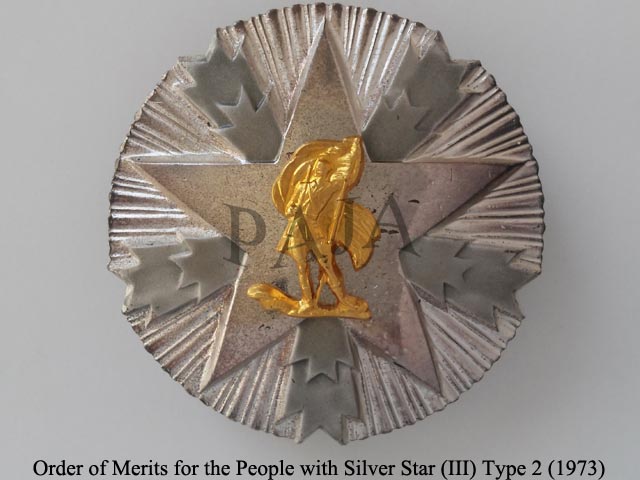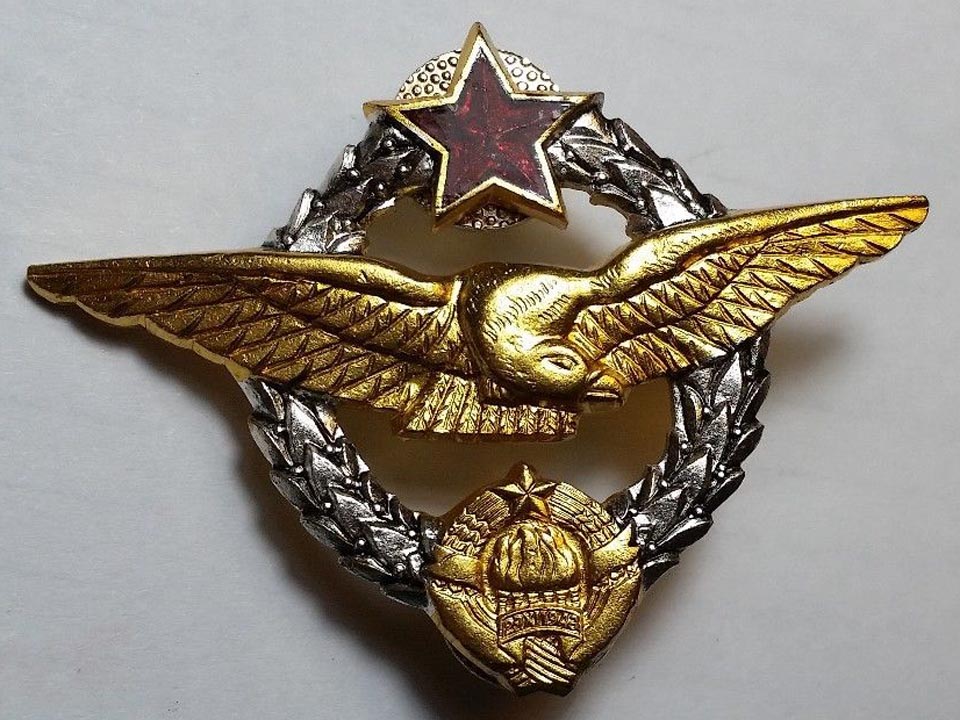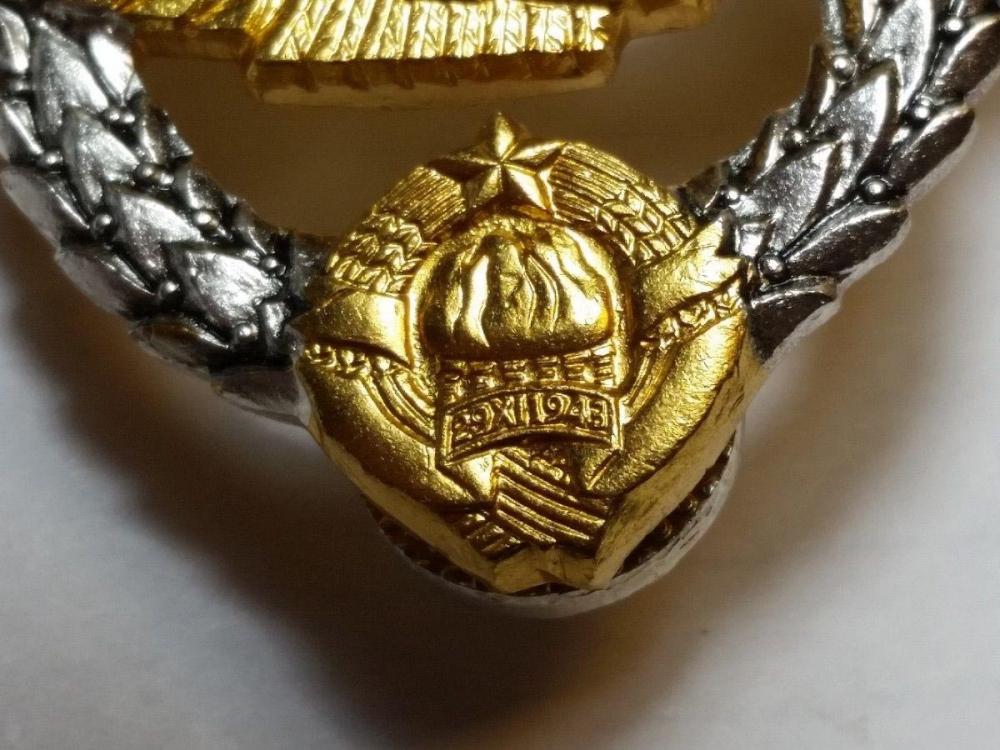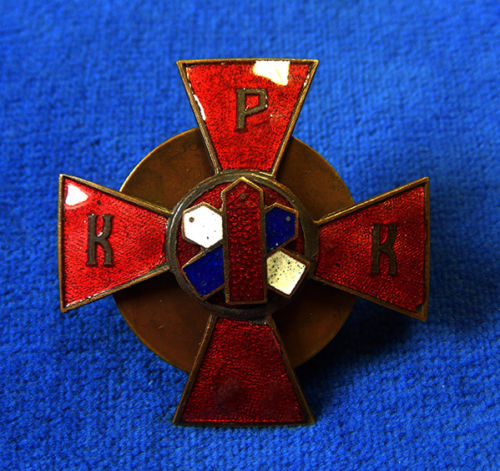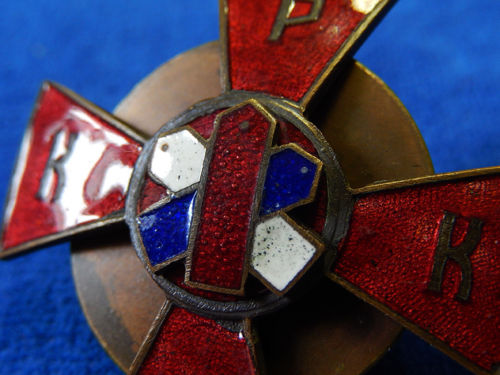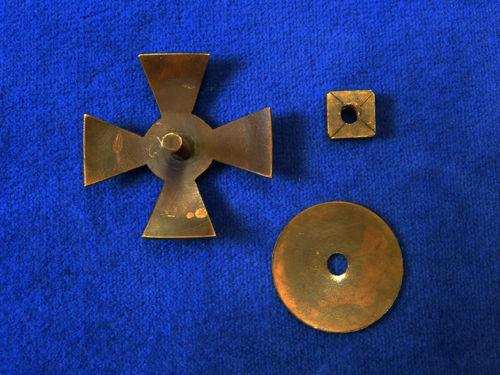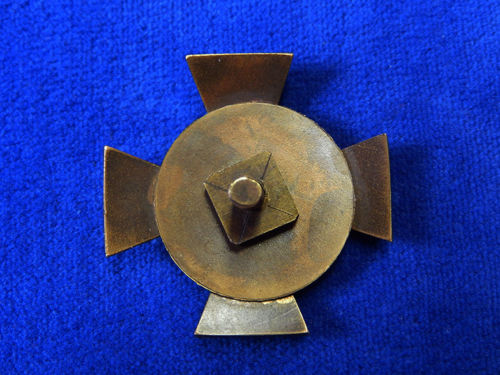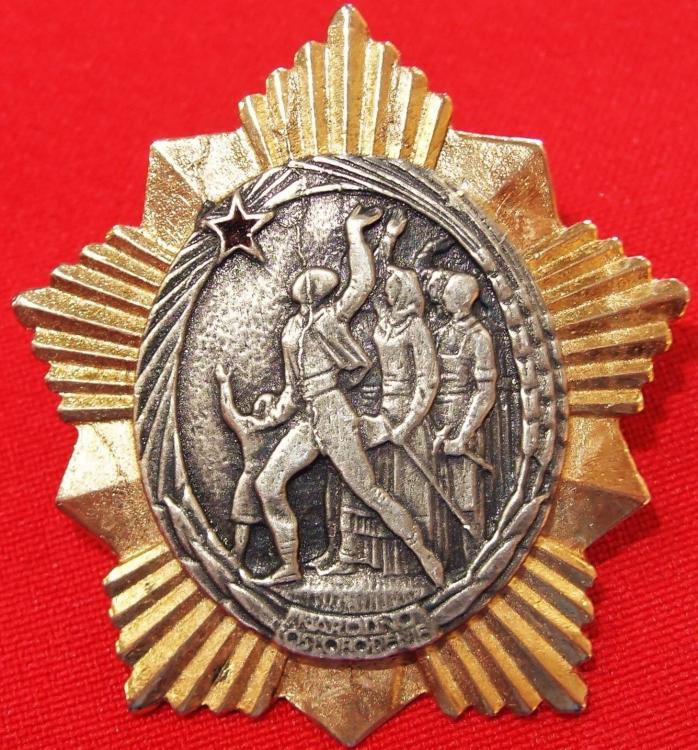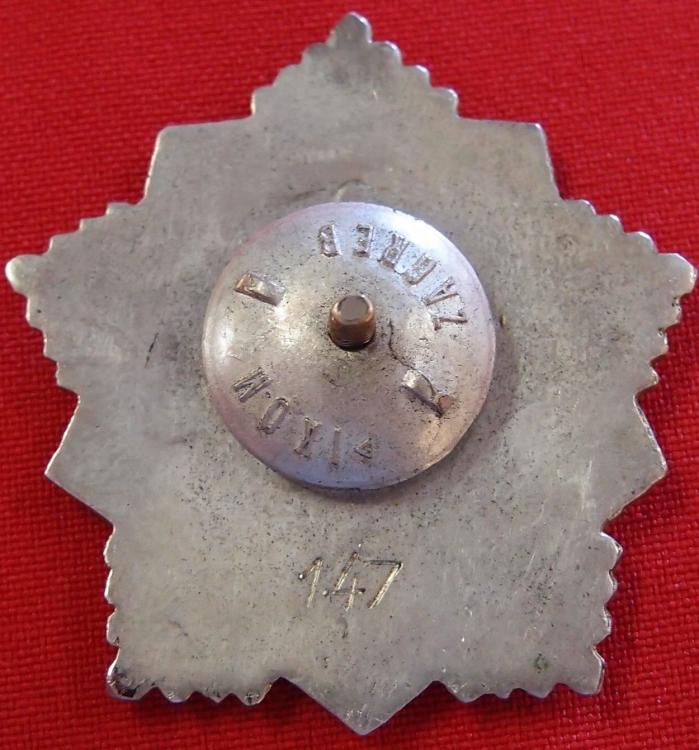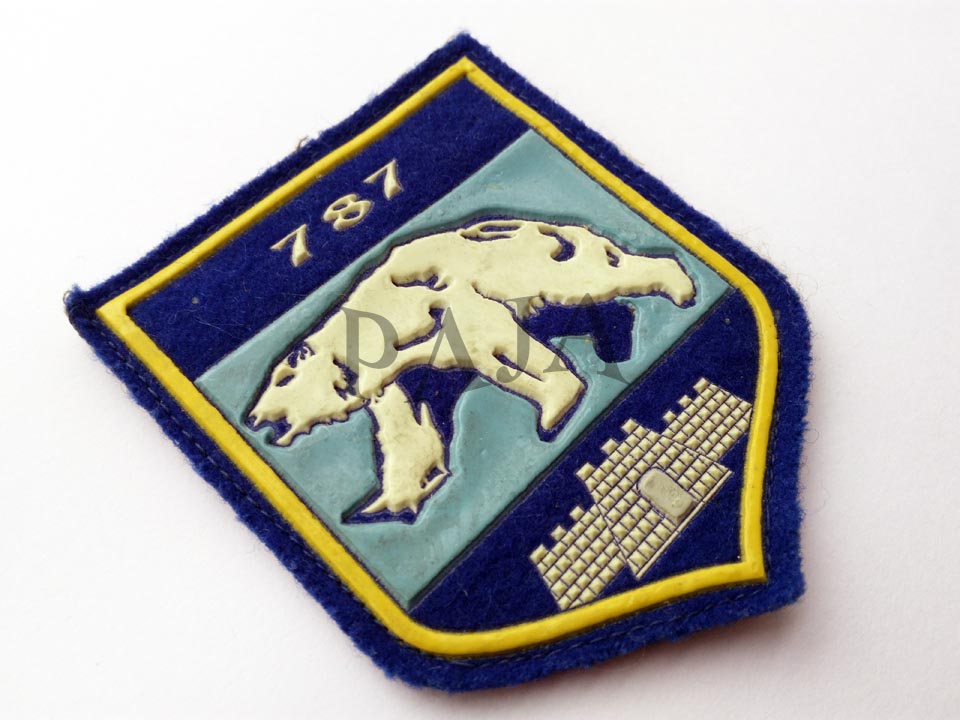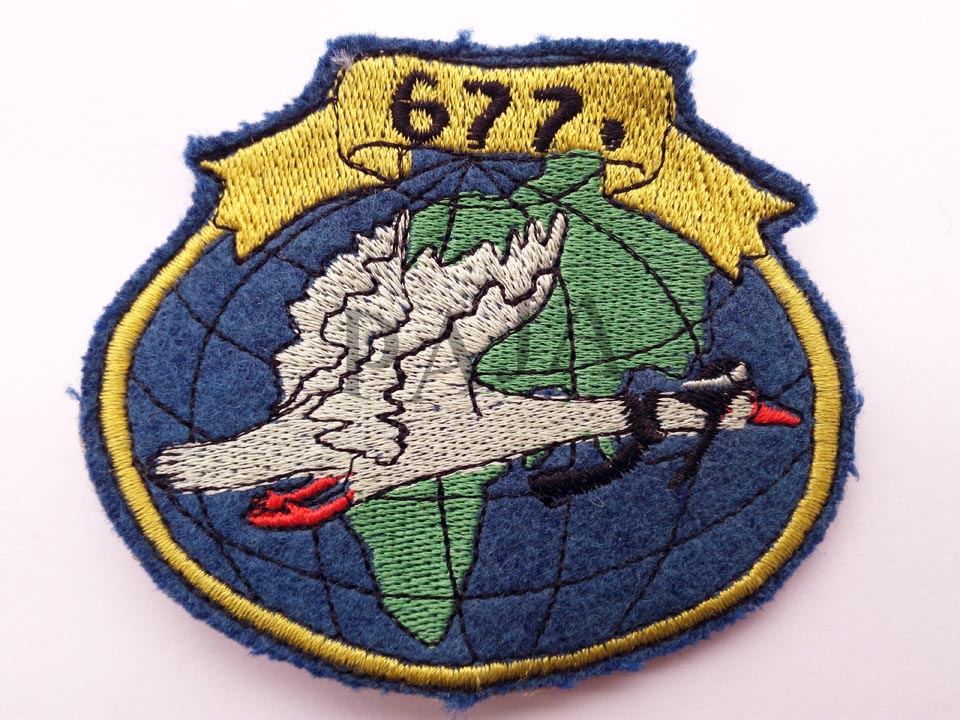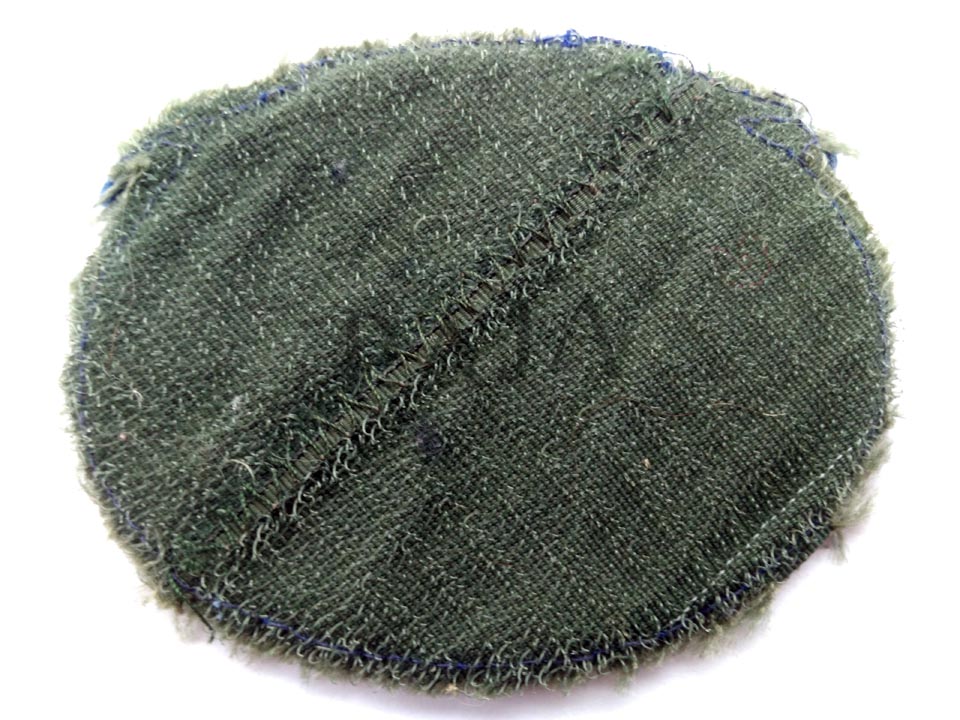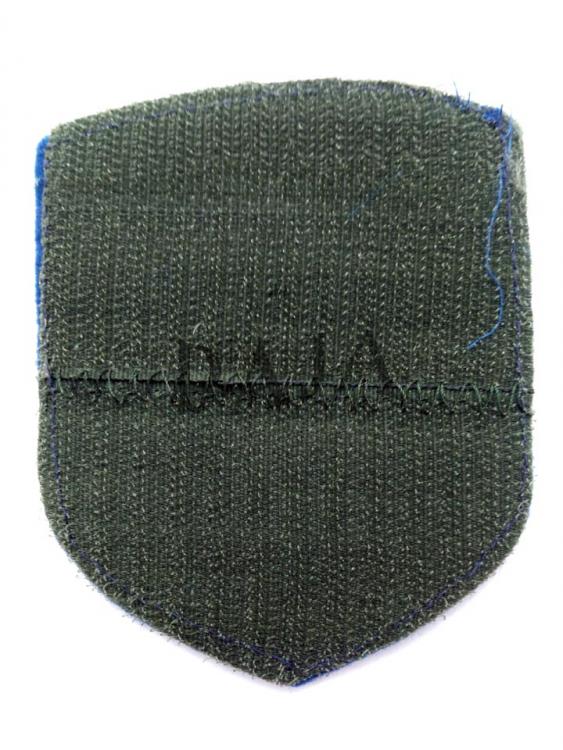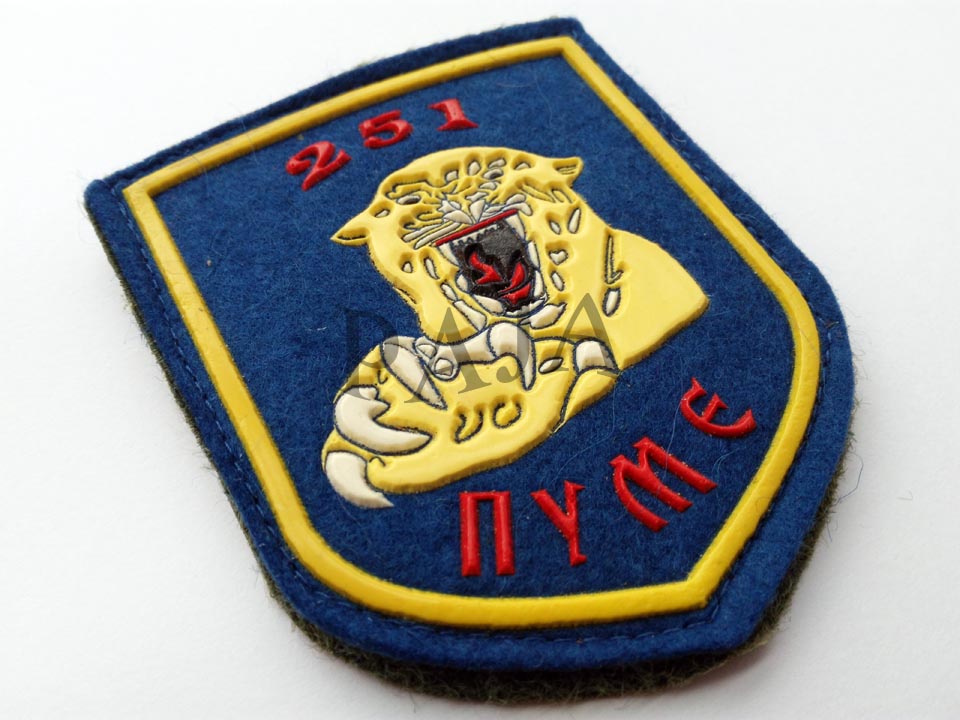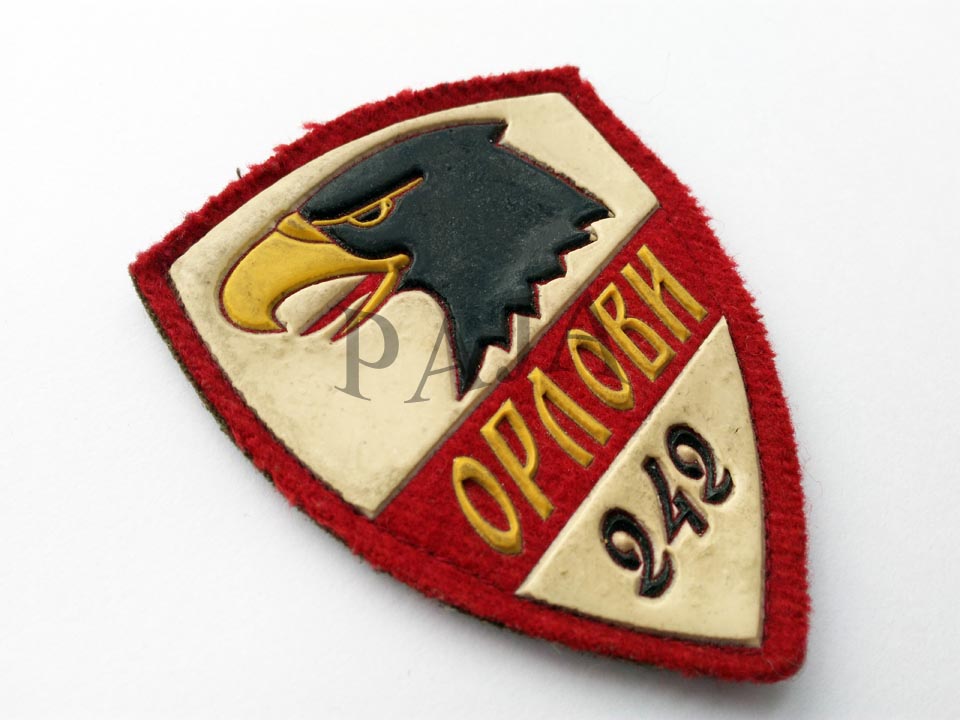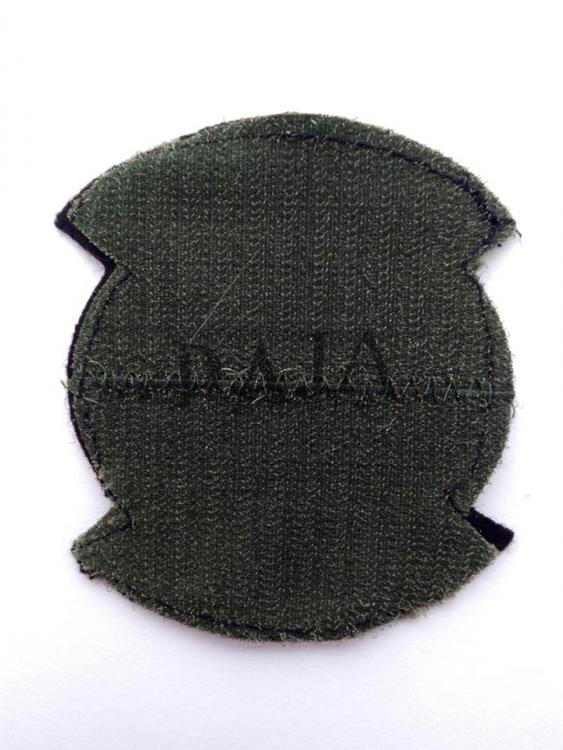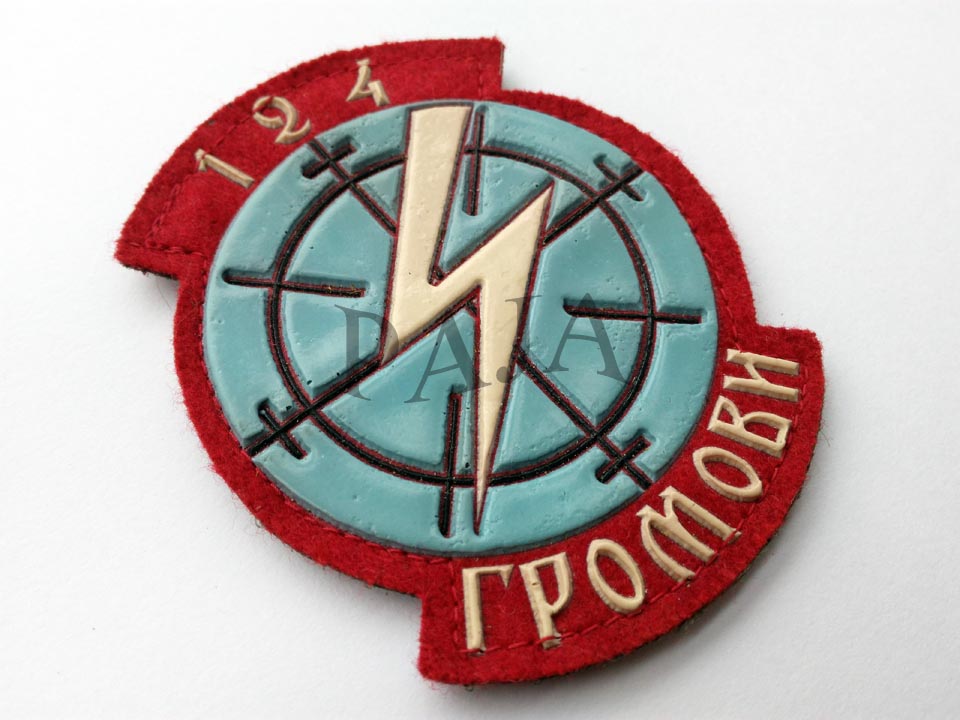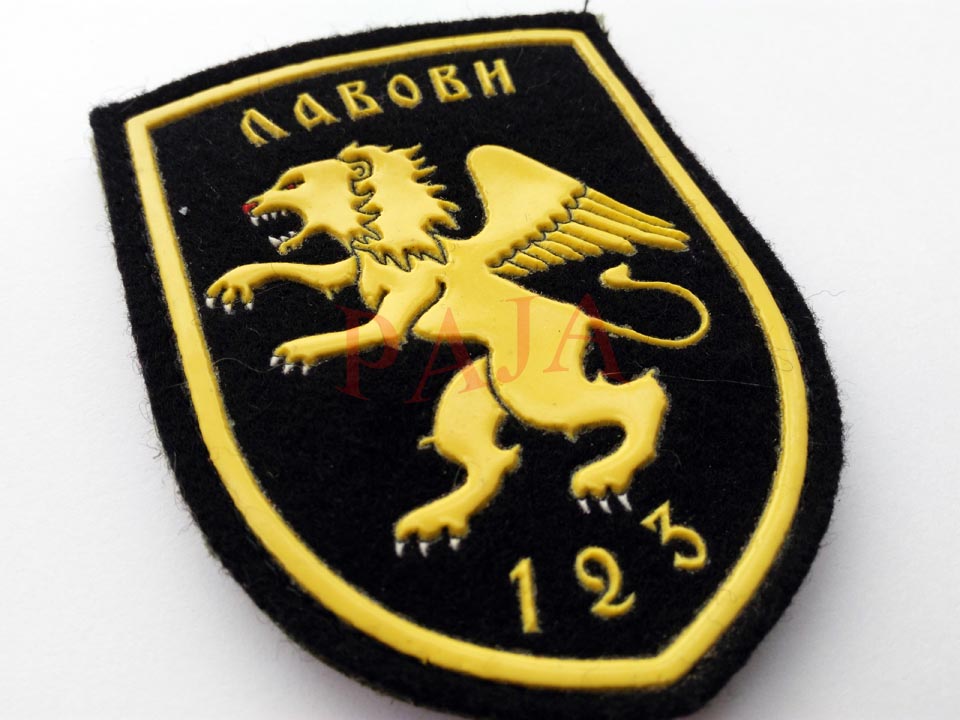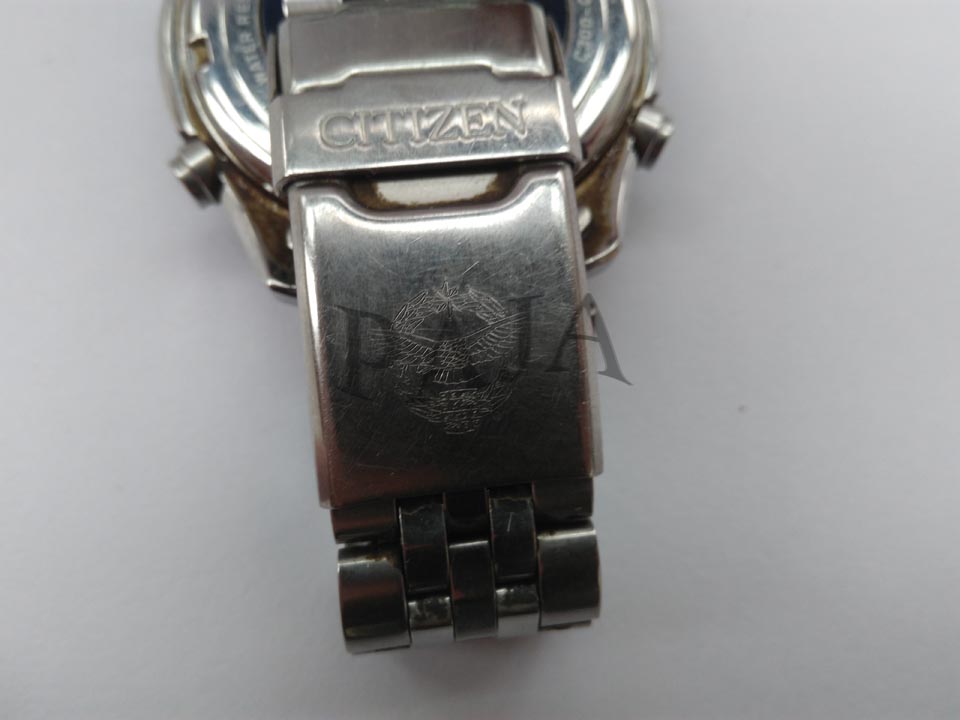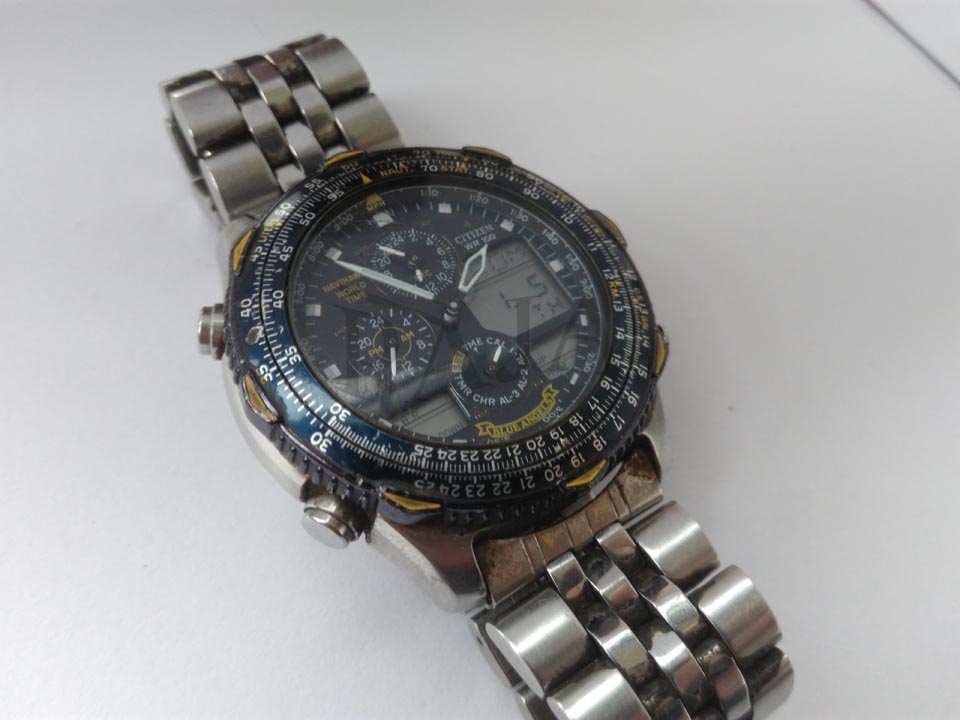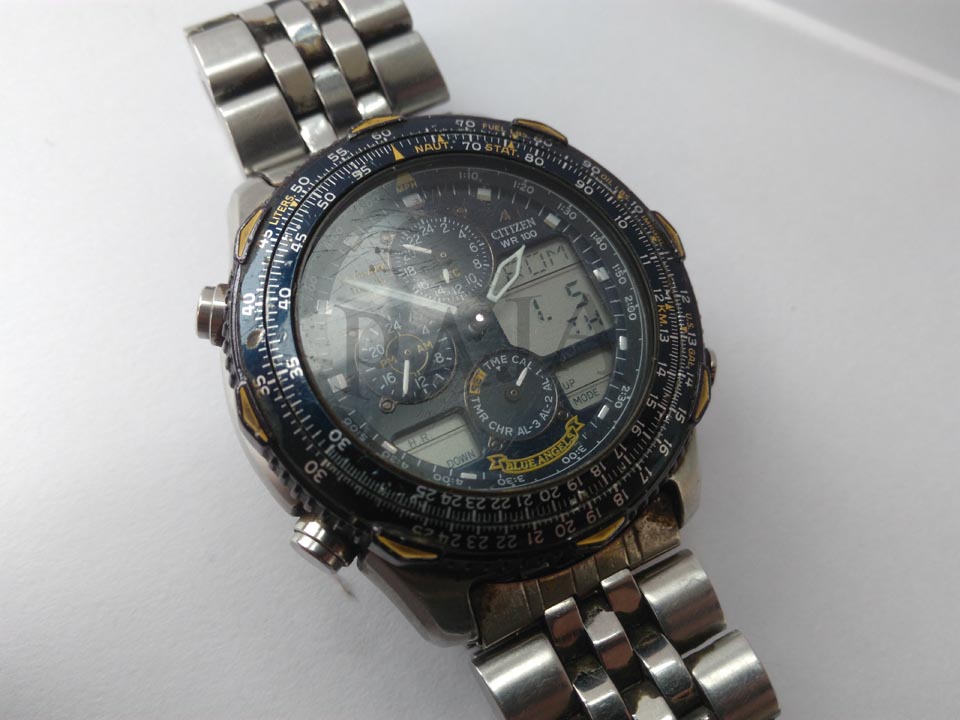-
Posts
3,629 -
Joined
-
Last visited
-
Days Won
1
Content Type
Profiles
Forums
Blogs
Gallery
Events
Store
Everything posted by paja
-
Yugoslavia - Order of Merits for the People III
paja replied to paja's topic in Southern European & Balkan States
Type 1.1.1, ZIN Belgrade Number and Roman numeral on the back side. Wider screw nut with Cyrillic inscription "ЗАВОД ЗА ИЗРАДУ НОВЧАНИЦА" (The Institute for Manufacturing Banknotes). I believe numbers range from 1 to around 20K but there are also examples with numbers between 70K and 77K. -
Yugoslavia - Order of Merits for the People III
paja replied to paja's topic in Southern European & Balkan States
My general classification of different variants: Type 1: -1.1 ZIN/ZNB screw variants -1.2 IKOM, screw variants + remade variants -1.3 ZIN/ZNB vertical needle Type 2: -2.1 IKOM remade variants -2.2 ZIN/ZNB vertical needle -2.3 IKOM double horizontal needle -
Order of Merits for the People III was instituted on June 12, 1945 and its name was changed three times: -1945-1961 Order of Merit for the People 3rd Class (Орден заслуге за народ III реда) -1961-1973 Order of Merit for the People with Silver Star (Орден заслуге за народ са сребрном звездом) -1973-1992 Order of Merits for the People with Silver Star (Орден заслуга за народ са сребрном звездом) In the beginning it was being awarded "for merits in the struggle against enemies of the people and for strengthening and organizing people's government and the Yugoslav Army." -Law of 1955 added new criteria: "...and for merits in the fields of economic, cultural and social development of the country." -Law of 1973 replaced the words: "for strengthening and organizing people's government and the Yugoslav Army" with the following: "for merits in development of socialism and socialist self-management and for organizing and strengthening total people's defense, security and independence of the country." So this order was practically being awarded for merits in all fields. According to Stojan Rudež since July 1945 when it was awarded for the first time until December 31 1985 it was awarded 282.864 times making it by far the most awarded Yugoslav order. Next one is Order of Labor with Silver Wreath awarded 182.910 until 1986, so 100.000 times less. The number from Mr. Rudež's book can't be taken as total because Order of Merits for the People with Silver Star was also being awarded in huge quantities after 1985. There are basically two types: -Type 1 (1945-1973) golden star and silver combatant -Type 2 (1973-1992) silver star and golden combatant I presume this change was made because of the previous name change (1961) when III became "with silver star". So order named "with silver star" which in reality had golden star existed over a decade. No matter how you put it the name is problematic: -Order of the Merits for the People with Golden Star (I) golden star and base, silver combatant and rays -Order of Merits for the People with Silver Rays (II) golden combatant and base, silver star and rays -Order of Merits for the People with Silver Star (III) Type 1 (1945): golden star, silver combatant, rays and base -Order of Merits for the People with Silver Star (III) Type 2 (1973): golden combatant, silver star, rays and base So from 1973 onward both II and III had silver stars while before that I and III had golden stars. Order of Merits for the People with Silver Rays received even more inadequate name because all three classes including both types of III have silver rays.
-
-
Order of the Star of Karageorge
paja replied to Igor Ostapenko's topic in Southern European & Balkan States
In my opinion French, anyway a great piece! Damaged enamel adds some character to the order -
Above-mentioned documentary "Јего благородије барон Врангел" in case someone's interested. It is in Serbian, unfortunately no subtitles but still one can see many interesting photos and films.
-
Thanks for that, Nick! RCC was based in Serbian town of Bela Crkva. Couple of weeks ago I stumbled upon Serbian documentary about Wrangel on Youtube, that's when I heard for the first time that more than 2500 Russians lived there in the interwar period. It is estimated that around 75.000 Russians found their new home in the Kingdom of Serbs, Croats and Slovenes. There's a small museum called the Russian room in Bela Crkva today and a Russian church built in I think 1930. Some 650 Russians found their final resting place in that town, 19 generals among them. Russian Room Museum LINK
-
I just noticed this badge among finished auctions on ebey, is it original? Information about the Russian Cadet Corps (Русский кадетский корпус) can be found on Russian Wiki page LINK. It was located in the Kingdom of Serbs, Croats and Slovenes/Kingdom of Yugoslavia and according to Wiki it was the first foreign and the last remaining Russian cadet corps.
-
-
Yugoslavia FR of Yugoslavia - Air Force patches
paja replied to paja's topic in Southern European & Balkan States
-
Yugoslavia FR of Yugoslavia - Air Force patches
paja replied to paja's topic in Southern European & Balkan States
Couple of patches kept together with the rest of them, received as a gift from a Greek Air Force pilot. 337th All Weather Squadron "Ghost" (337 Μοίρα Παντός Καιρού "Φάντασμα") -
Yugoslavia FR of Yugoslavia - Air Force patches
paja replied to paja's topic in Southern European & Balkan States
-
Yugoslavia FR of Yugoslavia - Air Force patches
paja replied to paja's topic in Southern European & Balkan States
787th Transport Helicopter Squadron "White Bears" (787. транспортна хеликоптерска ескадрила "Бели медведи") -
Yugoslavia FR of Yugoslavia - Air Force patches
paja replied to paja's topic in Southern European & Balkan States
-
Yugoslavia FR of Yugoslavia - Air Force patches
paja replied to paja's topic in Southern European & Balkan States
-
Yugoslavia FR of Yugoslavia - Air Force patches
paja replied to paja's topic in Southern European & Balkan States
251st Fighter-Bomber Aviation Squadron "Pumas" (251. ловачко-бомбардерска авијацијска ескадрила "Пуме") -
Yugoslavia FR of Yugoslavia - Air Force patches
paja replied to paja's topic in Southern European & Balkan States
242nd Fighter-Bomber Aviation Squadron "Eagles" (242. ловачко-бомбардерска авијацијска ескадрила "Oрлови") -
Yugoslavia FR of Yugoslavia - Air Force patches
paja replied to paja's topic in Southern European & Balkan States
239th Fighter-Bomber Aviation Squadron "Vampires" (239. ловачко-бомбардерска авијацијска ескадрила "Вампири") -
Yugoslavia FR of Yugoslavia - Air Force patches
paja replied to paja's topic in Southern European & Balkan States
229th Fighter-Bomber Aviation Squadron "Swords" (229. ловачко-бомбаpдерска авијацијска ескадрила "Мачеви") -
Yugoslavia FR of Yugoslavia - Air Force patches
paja replied to paja's topic in Southern European & Balkan States
83rd Fighter Aviation Regiment consisted of 123rd (Lions) and 124th (Thunders) Fighter Aviation Squadrons (1996-1999) so that's the reason why the regimental emblem consists of a lion holding a thunder. -
Yugoslavia FR of Yugoslavia - Air Force patches
paja replied to paja's topic in Southern European & Balkan States
-
Yugoslavia FR of Yugoslavia - Air Force patches
paja replied to paja's topic in Southern European & Balkan States
-
Army of Yugoslavia - Citizen Navihawk Blue Angels (C300)
paja replied to paja's topic in Southern European & Balkan States
-
Yugoslavia FR of Yugoslavia - Air Force patches
paja replied to paja's topic in Southern European & Balkan States
-
This watch used to belong to an Air Force pilot of the Army of Yugoslavia (Војска Југославије). Pilot's Badge from that era can be seen on the watch strap buckle. I've seen these watches before but this is the first time I had an opportunity to take some photos of it. I wonder who and why decided to give Yugoslav pilots a watch that bears the name and logo of a foreign aerobatic team...




